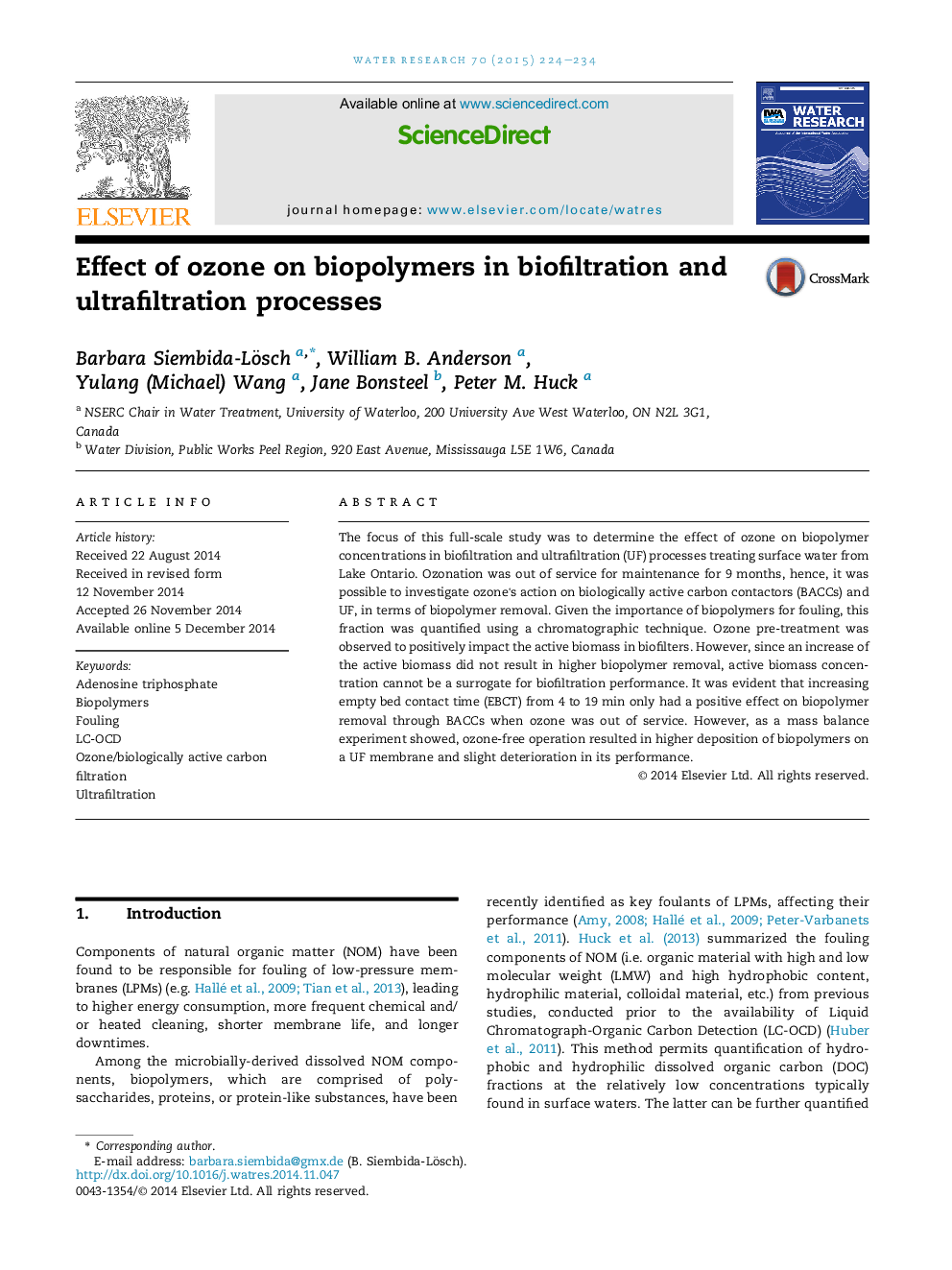| Article ID | Journal | Published Year | Pages | File Type |
|---|---|---|---|---|
| 4481308 | Water Research | 2015 | 11 Pages |
•Biopolymer removal through biofiltration was higher when pre-ozone was off.•Longer biofilter contact time improved biopolymer removal only when pre-ozone off.•Ozone improved active biomass concentrations in biofilters.•Active biomass and AOC were not related to biopolymer removal through biofiltration.•Biopolymer deposition on UF membranes was higher when pre-ozone was off.
The focus of this full-scale study was to determine the effect of ozone on biopolymer concentrations in biofiltration and ultrafiltration (UF) processes treating surface water from Lake Ontario. Ozonation was out of service for maintenance for 9 months, hence, it was possible to investigate ozone's action on biologically active carbon contactors (BACCs) and UF, in terms of biopolymer removal. Given the importance of biopolymers for fouling, this fraction was quantified using a chromatographic technique. Ozone pre-treatment was observed to positively impact the active biomass in biofilters. However, since an increase of the active biomass did not result in higher biopolymer removal, active biomass concentration cannot be a surrogate for biofiltration performance. It was evident that increasing empty bed contact time (EBCT) from 4 to 19 min only had a positive effect on biopolymer removal through BACCs when ozone was out of service. However, as a mass balance experiment showed, ozone-free operation resulted in higher deposition of biopolymers on a UF membrane and slight deterioration in its performance.
Graphical abstractFigure optionsDownload full-size imageDownload high-quality image (220 K)Download as PowerPoint slide
